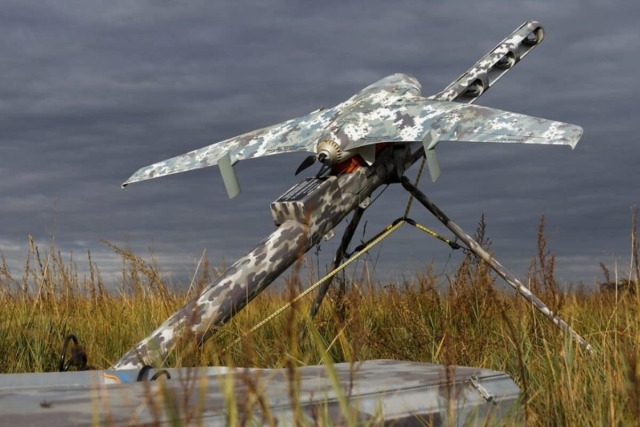The material is the final part of the article "Lessons learned from the conflict in Ukraine – UAV operations, options and trends". The author is David Saw– an analyst at European Security & Defense. The first part .
The translation of the article is made with the preservation of the author's style. Under the heading "Foreign author", the IVi editorial board tries to represent a wide range of views of foreign military specialists. [IVi's remarks are given in square brackets]
Foreign suppliers of [Russian UAVs]
The Russian invasion of Georgia in 2008 was another indication of the capabilities of the UAV, as Russian troops received the Elbit Hermes 450, which is used by the Georgian Defense Forces. One of the consequences of this was that in April 2009, Russia signed a contract with Israel Aerospace Industries (IAI) for about $ 50 million, providing for the acquisition of Searcher II, BirdEye 400 and I-View 150. A total of 12 systems were purchased. This acquisition gave Russia access to modern UAV technologies and allowed it to develop operational skills. This also served as the basis for Russia's further acquisitions of Israeli UAVs.
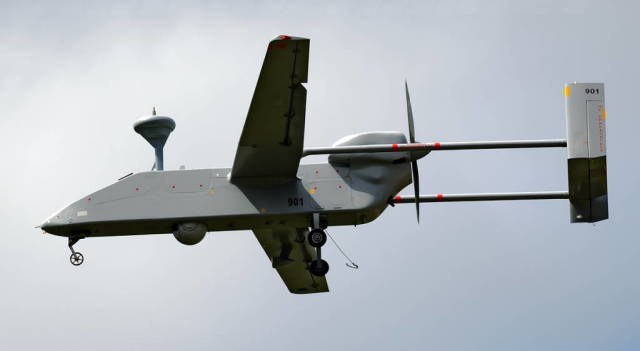
Russian UAV "Outpost"In October 2010, IAI and the Russian Defense Industry signed a second contract for the use of UAVs worth $ 400 million.
Here the idea was to assemble and license the production of the BirdEye 400 [under the name] "Zastava" and the Searcher II as an "Outpost" at the Ural Civil Aviation Plant in Yekaterinburg. It is important to note that, despite the fact that these systems are manufactured in Russia, they were based on imported components, which are believed to have been obtained from Israeli, German, Spanish and Swiss suppliers.
In 2015, Israeli media reported on another contract between IAI and Russia, which allegedly provides for the assembly of 10 Searcher II UAVs in Russia, but it is not known whether this is related to the contract concluded in October 2010. Presumably, Russia was also interested in the long-range IAI Heron system, but the deal did not take place. UAVs "Zastava" and "Outpost" were used by Russian troops during the invasion of Ukraine.
The acquisition of Israeli UAVs was an important event in the creation of its own UAV potential in Russia, demonstrating what is necessary for the production and deployment of usable systems. Having such a relationship with Russia had certain advantages for Israel, especially when Russia began to increase its involvement in the Middle East. There was hope that the relationship would allow Russia to keep its clients, such as Syria and Iran, from anti-Israeli actions. However, [these] relations also had costs – for example, it seems that Ukraine was interested in acquiring Israeli UAVs in 2015, but Russia heard about the potential sale and put pressure on Israel. As a result, Israel could not authorize the sale of UAVs to Ukraine.
Russia also sought to acquire UAVs and technologies from other sources. The Austrian company Schiebel has signed a cooperation agreement with the Russian JSC Horizon, covering the development of the S-100 Camcopter variant for a number of civilian UAVs in Russia. However, Schiebel's cooperation with the Russian company ceased after the invasion.
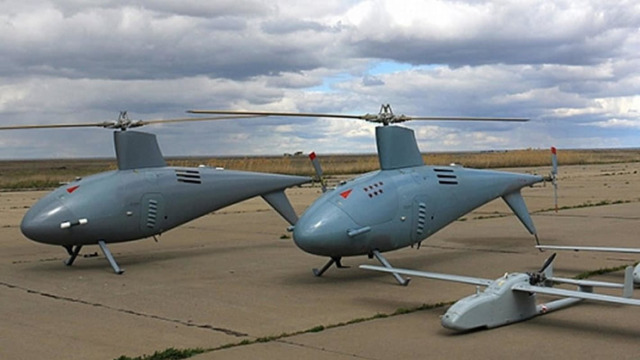
Target complex with UAV from the Central Research Institute "Dynamics"Meanwhile, Russia has developed a helicopter–type UAV system very similar to the Camcopter - the Dinamika Flight Technologies BAP system [according to the author of the article], which entered service with Russia at the end of 2020.
Its main function is to act as a target for air defense systems, reproducing UAVs and helicopters. The system, apparently, was first used at the joint exercises of Russia and Serbia in January 2021, where it was involved in the training of the crews of the Pantsir-S ZRPC. Since then, it has been actively used in Ukraine.
In general, the fact that Russia is ready to acquire foreign systems has shown how concerned it is that its UAV capabilities lag behind international standards. Since the signing of the first foreign acquisition contract in 2009, the Russian UAV sector has developed significantly. By the end of 2020, the Russian military announced 2,100 UAVs of various types in active service.
The Syrian test site
In addition to the first phase of the conflict in Ukraine (2014/2015), Russia has also made extensive use of UAVs during its intervention in support of the Assad regime in Syria since September 2015. Russian UAVs were used by Wagner troops and mercenaries [Wagner PMCs], and Syria provided Russia with the opportunity to develop tactics for using UAVs and support strategies in an operational environment.
In addition to foreign developments of UAVs, the Russian industry has gradually designed a number of its own systems that could meet many emerging needs of the Russian military, as well as other government customers, among others, such as the Border Service /Coast Guard, the Ministry of Emergency Situations and the Ministry of Internal Affairs. However, there were also negative aspects that had to be dealt with – apparently, there was dissatisfaction with the ability of the Russian industry to meet user requirements in a timely manner.
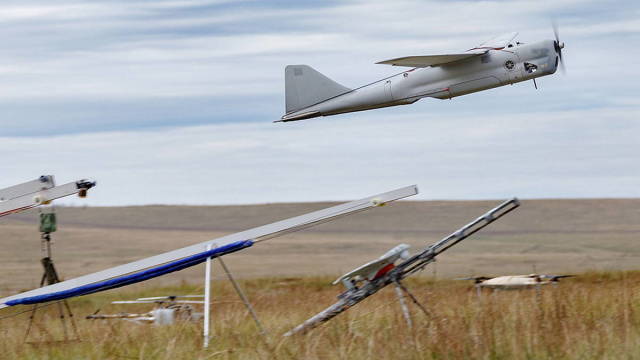
UAV "Orlan-10"Most of the Russian UAVs currently in use in Ukraine have previously debuted in Syria.
The most numerous domestic UAV is the Orlan-10, produced by a Special Technological Center in St. Petersburg. More than 1000 devices were built, and the system was exported, in particular, to Myanmar. The Orlan-10 is available in several variants, including reconnaissance, electronic warfare and communications repeater options. Other Orlan-10 systems, differing in size and functions, have been identified. More than 100 Orlan-10 vehicles were lost over Ukraine.
To a lesser extent, domestic Russian UAVs include Aileron-3SV/T28M (Enik company), Tachyon mini-UAVs (Kalashnikov Concern), Korsar (Rostec), and Zala Aero Group offers a wide range of UAVs from micro to tactical level. However, until now, programs for the development of UAVs that perform the same functions as the American Predator or Reaper systems have yielded little in terms of functionality. Systems in this category include Altius-M [JSC NPO Simonov Design Bureau, Kazan] and S-70 Hunter (Sukhoi Company), as well as Orion, Sirius, Helios and Grom UAVs from the Kronstadt Group".
Returning to the operations of Russian UAVs, in the Donbas and in Syria, Russia was working on a concept called a reconnaissance and strike complex (RUK). In the hands of the UAV, surveillance and guidance data are provided to the central command node, which then coordinates the use of tactical aviation, long-range missile systems or other long-range fire means to quickly defeat targets detected by the UAV. If everything works as planned, the RUK should allow Russian forces to effectively fire at long ranges throughout the combat zone.
In Syria, Russian UAVs also had to cope with the operational situation when UAV counteraction systems were used. They also had to practice conflict resolution because they were operating in an area where other [parties to the conflict] were flying planes and helicopters, as well as UAVs, some were hostile and some were not. In Syria, Russia has also deployed its own electronic warfare systems, some of which have been optimized to combat UAVs.
As for the intensity of Russian UAV operations in Syria, an official statement as of October 2017 noted that 16,000 UAV flights were performed, with a total duration of 96,000 flight hours. By the end of 2017, Russian officials claimed that they had 60 to 79 UAVs operating daily. By July 2018, Russia published data according to which a total of 23,000 flights were performed, which amounted to 140,000 flight hours. The main lesson learned from Syria was that modern operations are impossible without the effective use of UAVs.
Unexpected solutions
The double weakness of the inability of Russian industry to meet domestic demand and its dependence on foreign components manifested itself after the invasion of Ukraine in February 2022 turned into a protracted conflict of high intensity. The Russian military expected a lot from their UAVs, but they were not able to make up for the losses as quickly as they would like. In addition, the introduction of trade embargoes by American, European and other suppliers made it increasingly difficult to purchase the necessary components.
To resolve this situation, Russia did something unexpected, turning to Iran for the supply of a number of UAVs. Since Iran is used to operating under an embargo, it could supply systems that are not subject to interference in the supply chain. In addition, many Iranian UAVs have been successfully tested in combat in the Middle East, both in reconnaissance and strike missions, many of which were carried out at long ranges, both against land and sea targets. It should be noted that the analysis of Iranian UAVs indicates the presence of components of American and European origin. They should not be provided to Iran, which is under UN sanctions, which indicates that Iran has found a way to circumvent sanctions.
jpg">The wreckage of an Iranian UAV is being displayed in the United States as part of efforts to expose the proliferation of Iranian weapons under UN sanctions. Russia's decision to turn to Iran for drones was an unexpected event that shows how far Iran has advanced in this area.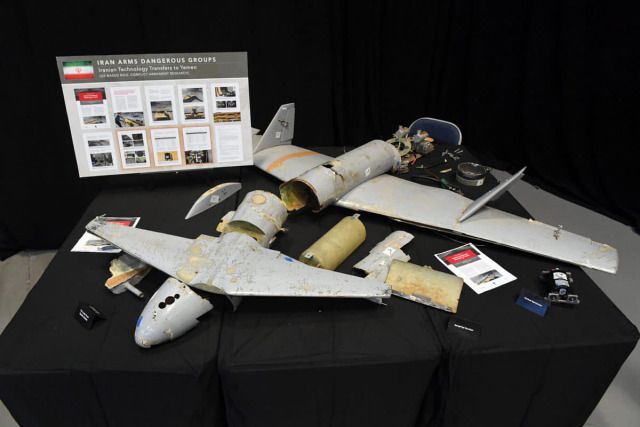 |
| Source: European Security & Defense |
More recently, reports have appeared in the media about the construction of a new plant in Russia for the production of Iranian UAVs. This makes sense both from the point of view of Russia and from the point of view of Iran, especially since the Iranian production facilities of UAVs have recently been attacked by drones of "unknown attackers". The most likely systems to be manufactured are the Shahed-131, Shahed-136 and Mohajer 6, which seem to be more powerful than previous Iranian models used in the Middle East. It is obvious that both Russia and Iran have a high degree of confidence that they will continue to purchase UAV components from foreign suppliers without interruption, many of which are for military purposes.
Iran is probably able to meet Russian needs for UAVs, assuming that the damage to their production facilities from the recent attack was not too severe. As soon as the new Russian production facility is put into operation, a safe production site will appear, which will probably be able to meet the Russian and Iranian needs for UAVs. Perhaps this is one of the most important Russian developments in the field of UAVs since the decision was made to acquire Israeli systems in 2009 and 2010.
The other side
If we take into account the size of the Russian military-industrial base, its undoubted capabilities, engineering resources and, in recent years, access to development financing, then their progress in terms of UAVs has not been successful. In many ways, the need to acquire Iranian UAVs is a rather damning indictment of Russian efforts to develop its own potential in this area and ensure a reliable supply chain.
For Ukraine, the situation was completely different, it did not have a powerful military-industrial base or resources to finance the development and acquisition of UAVs on a large scale. What they could do is develop some innovative small-scale local solutions for UAVs, and purchase the rest from foreign suppliers, although their financial resources remained limited before the current conflict.
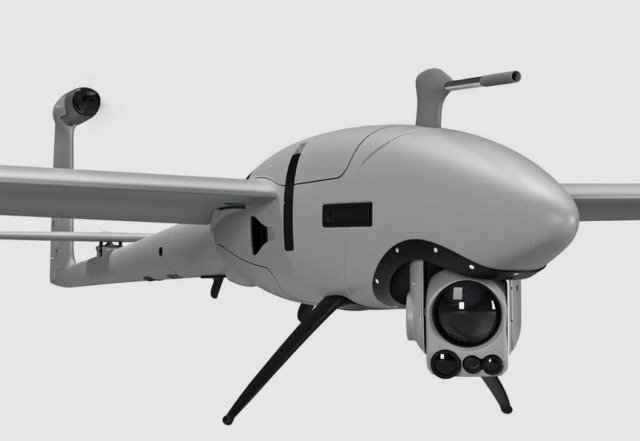 |
| Vector UAV of the German company Quantum Systems. |
| Source: European Security & Defense |
Ukraine is now able to buy UAVs if necessary – in August 2022, they purchased 33 Vector UAV systems from the German company Quantum-Systems. In January 2023, they placed an order for another 105 Vector systems, and according to German media reports, the cost of each Vector is 180,000 euros. There can be no doubt that Ukraine will seek to strengthen its UAV capabilities through more foreign acquisitions, as well as local developments.
In short, this war demonstrates that the capabilities of UAVs are becoming increasingly important for modern military operations.
The materials of the article contain exclusively author's estimates and do not reflect the position of the editorial board of IViAccording to the materials of the resource euro-sd.com
